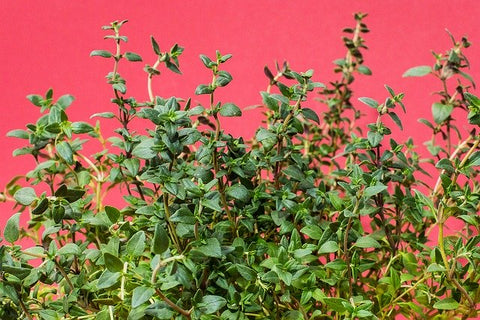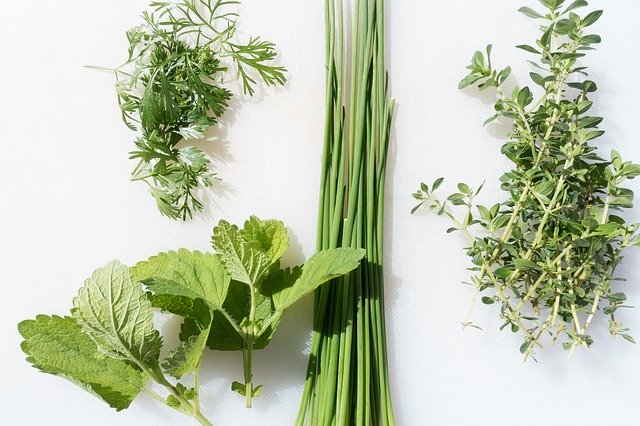Top 10 Homegrown Herbal Remedies From Your Garden
Natural medicine in your garden
There are many easy to grow herbs and flowers that have a wide range of health benefits for you and your family. Some of these may be present already but if not all the plants on our top 10 list of herbal remedies are easy to plant and maintain. Many of these plants are great for your garden regardless even if you do not plan on using them as medicine, they can help repel harmful pests for your other more sensitive plants and help attract wildlife you do want in your garden. Many of the plants mentioned are great for bees and at the moment they need our help to boost their numbers and health of their colonies.
Be sure to plan your garden well and place plants in places that suit the conditions they prefer. Plants like rosemary, lavender and mullien tend to love the drier placements with plenty of sunshine whereas cilantro and mint prefer shadier spots with more moist soil. If you are thinking of making some new additions to your garden though you can use supermarket grown herbs it is recommended that you grow your own for better quality plants and herbal remedies. Supermarket herbs tend to be grown as fast as possible to keep costs down compromising on quality of the crop.
Garden remedy number 1 - Basil (Ocimum Basilicum)

Medicinal uses of basil
Basil has a medicinal tradition originating from the Mediterranean, it was first utilised as an insect repellent in the Greco-Roman world and as antidote to scorpion poison. Nowadays basil is more commonly used by people in India who use it as a medicine to treat stress, diabetes and asthma. Recent scientific studies have shown that basil has antiviral and antioxidant properties.
How to grow basil
Basil thrives in moist soils and prefers to have around 6 hours of sun a day. Basil can be grown inside, or outside in soil or in flower pots. It is an easy to care for plant and does not require much maintenance. To ensure a healthy plant after harvesting take care not to damage the stem of the plant when taking its leaves, try to evenly pick leaves from all around the plant.
Garden remedy number 2 - Cilantro (Coriandrum Sativum)

Medicinal uses of cilantro
The seeds of this plant are called coriander and it is well known as a crucial ingredient in many Indian curries. The leaves of this plant are often used as garnish. It is often neglected when classifying medicinal herbs but scientific research shows that cilantro is a powerful digestive aid and helps remove toxins from the body such as heavy metals.
How to grow cilantro
Cilantro tends to prefer cooler and more most areas of the garden, be careful though when the weather gets hotter cilantro tends to grow super quickly so if you do not want it to overtake your garden it is best to find slower growing varieties.
Garden remedy number 3 - Lemon Balm (Melissa Officinalis)

Medicinal uses of lemon balm
Lemon balm is a tasty herb especially when made into teas or tinctures, it mixes great with other herbs such as peppermint. The leaves and the flowers of the lemon balm contain oils that help relax the stomach and nervous system giving it a antispasmodic effect which means it could help ease suffers of IBS or even cure your hiccups! The essential oil of lemon balm in high enough concentrations has antiviral properties and in a 2008 scientific study it was proven to be extremely effective at protecting cells against the viral attacks of HSV-1 and HSV-2, (Herpes Simplex Virus). It has little or no effect on cells already infected by the virus however.
How to grow lemon balm
Dried lemon balm loses potency after 6 months so it is best to grow your own. Lemon balm prefers sandy, loamy soil. The plant with thrive in the more sunny locations but it can grow in shade if absolutely necessary. Lemon balm is super easy to grow and care for as even though it prefers certain conditions it actually is not that fussy and will grow almost anywhere.
Garden remedy number 4 - Peppermint (Mentha X Piperita)

Medicinal uses of peppermint
Peppermint is probably a plant you are already familiar with, it is often used as a flavouring as it provides a powerful refreshing taste. It has some great medicinal properties too, when it is made into tea it can help relieve indigestion and vomiting. When added to soaps it is effective at soothing sore muscles.
How to grow peppermint
All varieties of mint plants spread extremely fast, especially in moist conditions. Plant somewhere shaded and moist even consider growing each plant in its own large planter or flower pot. Make sure you harvest the leaves prior to flowering or they may begin to taste bitter.
Garden remedy number 5 - Rosemary (Rosmarinus Officinalis)

Medicinal uses of rosemary
Rosemary is an energising herb it can be a great alternative to caffeine to those who want to cut back but still want a little boost. Rosemary improves the flow of oxygen to your brain bringing with it the benefits of improved memory and concentration.
How to grow rosemary
Rosemary is a woody herb that grows more like a hedge, they deal well with dry soils and are long lived, they spread quite far so you will only need to plant one and then you will have an amazing evergreen bee-friendly hedgerow.
Garden remedy number 6 - Mullein (Verbascum Thapsus)

Medicinal uses of mullein
The leaves of mullein are actually a common ingredient in many cough medicines, mullein has a soothing effect to it and goes a long way to help calm down various types of chest infections.
How to grow mullein
This plant needs allot of space, it can grow up to 8 foot tall with large thick and hairy leaves. It is best to plant mullein next to walls, fences or large trees to provide a little protection from high winds. They prefer to be in full sun and grow best in dry, alkaline rich soils.
Garden remedy number 7 - Thyme (Thymus Vulgaris)

Medicinal uses of thyme
Thyme the herb of choice for any wannabe comedian, when it comes to a quick a quick pun it is perfect. But is thyme really the best healer? Well all puns aside thyme does have some health benefits. Steep thyme in alcohol to create a tincture, then apply to acne ridden skin and it is proven to be more effective than many over the counter acne treatments. Thyme is rich in Vitamin C and a great source of Vitamin A, so thyme is great at boosting the immune system. Thyme makes a great pest repellent and in fact thymol is found in many pesticides, mix 4 drops of thyme oil with every teaspoon of olive oil or 5 drops of thyme oil with every 2 ounces of water and you have a great natural pest repellent.
How to grow thyme
You can grow thyme indoors near a sunny window or outdoors in well drained soil that receives plenty of sunlight. In the garden a great companion plant for thyme is lavender as they prefer similar conditions. Thyme is low maintenance and tends to do better when gardeners find a good plot for it and just leave it be without any fuss.
Garden remedy number 8 - Lavender (Lavandula)

Medicinal uses of lavender
Lavender has long been used because of its pleasant fragrance, making it ideal for perfumes. Lavender is recognised as a mild antidepressant, it helps to relieve stress, tension and aids with sleep. To get the calming effects of lavender add some lavender oil to a bath or a bowl of hot steamy water. Lavender is also added to creams with aid with the treatment of sunburn and acne.
How to grow lavender
Lavender plants prefer the hotter places in your garden and need plenty of sunshine, they thrive in drier soils. In the garden lavender is said to grow well next to thyme. Lavender can be grown in pots if you have limited planting space.
Garden remedy number 8 - German Chamomile (Matricaria Recutita)

Medicinal uses of chamomile
Chamomile is well known for helping with stress and anxiety, it has other uses too though however, chamomile helps fight infections, calms stomach conditions and it is actually the more effective herb for treating colic.
How to grow chamomile
Chamomile prefers shady parts of the garden, it does not require much sunlight but will still grow in full sun if that is the only plot you have available. It is a low maintenance plant like most herbs and is best left alone once planted. Chamomile will grow happily in any garden pot or container as long as the soil can drain.
Garden remedy number 9 - Catnip (Nepeta Cataria)

Medicinal uses of catnip
The catnip plant is famous for its intoxicating effect on cats but you might not know it has uses for humans too. If you chew the leaves of the catnip plant it helps reduce the pain from toothaches, it relieves fever symptoms by inducing sweating and it can help you with stress or sleep problems as it has sedative properties. The catnip plant also is an extremely effective mosquito repellent.
How to grow catnip
Catnip grows best in full sun locations in well draining soil. Once established the plant needs no care, be careful not to plant catnip near your other plants as it may attract cats to your garden which will roll around in the catnip which can damage nearby plants. Even though catnip will attract cats, having catnip in your garden tends to deter your neighbours cats from deciding your garden is toilet.
Garden remedy number 10 - Dandelion (Taraxacum)

Medicinal uses of dandelion
The dandelion is an extremely common weed in the garden but it does actually have some medicinal uses. The dandelion is a great detoxifier, it helps to clean the liver by being a diuretic and drawing water through and out of the body. The dandelion is an incredibly good plant for you it is full of vitamins and powerful antioxidants. The entire dandelion plant from root to flower is packed with health benefits. For such a common plant we are only just learning scientifically about its effects. There are many other claims about the dandelions medicinal uses that are yet to be proven and these include; fighting inflammation, controlling blood sugar levels, reducing cholesterol, lowering blood pressure and helping with weight loss.
How to grow dandelion
Dandelions are a common weed and will most likely pop up out of nowhere. You can dig them up and put them in a separate pot or planet, if you do not want them to spread all throughout your garden make sure that you cut off the head of the flower before it opens in its seed spreading stage.
Sources
https://www.faena.com/aleph/articles/ten-medicinal-plants-that-you-can-easily-find-in-your-garden/
https://www.healthline.com/health/herbal-remedies-from-your-garden
https://www.sciencedirect.com/science/article/abs/pii/S0944711308001128?via%3Dihub
https://www.gardeningknowhow.com/edible/herbs/chamomile/growing-chamomile.htm
https://balconygardenweb.com/how-to-grow-mullein-care-and-growing-mullein-plant/
https://www.gardeningknowhow.com/edible/herbs/catnip/growing-catnip.htm

